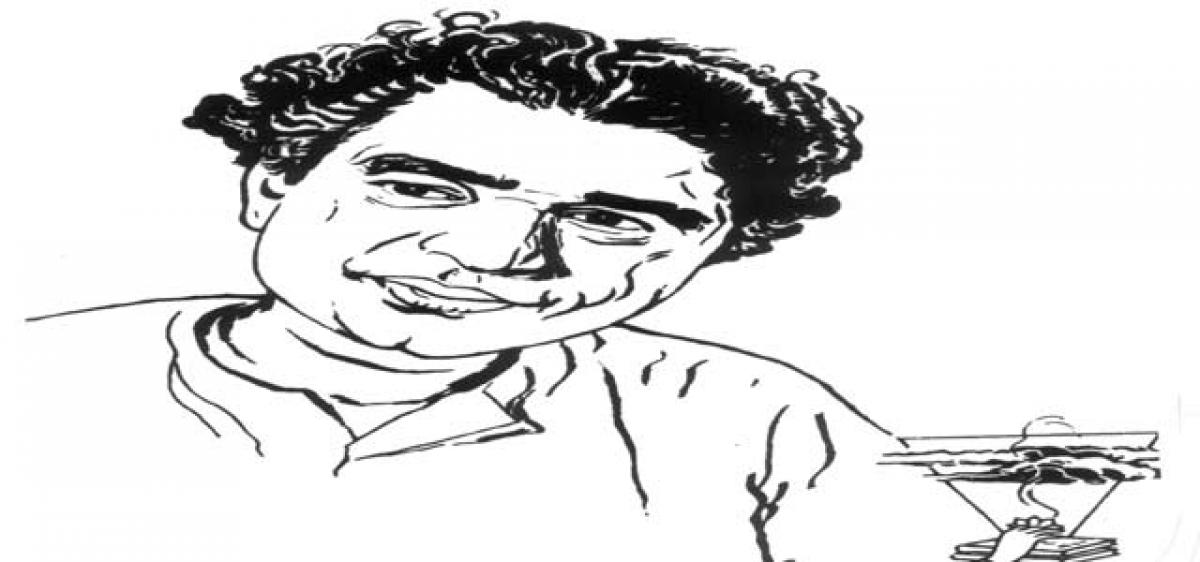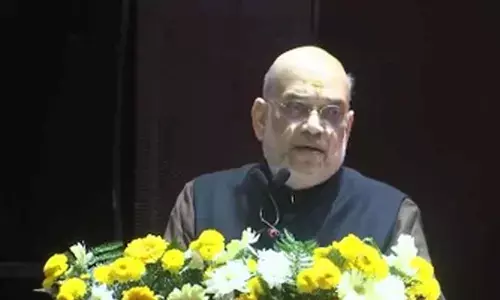The Timeless classic

Tripuraneni Gopichand, short story writer, novelist, playwright, editor, essayist, script writer for movies, cinema director and producer, radio playwright and programmer is truly a multifaceted artist.
Tripuraneni Gopichand, short story writer, novelist, playwright, editor, essayist, script writer for movies, cinema director and producer, radio playwright and programmer is truly a multifaceted artist.
His creative output includes a dozen novels, around hundred stories, a dozen plays, around the same number of movie scripts and many essays and non-fiction that includes literary and philosophical issues and journalistic sketches.
That he produced such an astounding work within 52 years of his short lifespan do assert his tremendous creative vitality.
Gopichand lived an intensive living that shattered the barriers between the art and artist. He was an emotional person, who never waited till the issue got perceptively analysed and clearly understood, but reacted to it immediately.
Hence, he was always contemporaneous and it was his strength as well as weakness. As the son of Tripuraneni Ramaswamy, the renowned social reformer and poet, he imbibed the character of questioning the rigid ideas existing in the social and cultural practices and tried to redefine them through his literature and activism.
He was a modern writer, who was always realistic in his quest for reason, cause and effect. Inspired by MN Roy’s (1887-1954), a nationalist revolutionary, radical activist and political theorist, he became the first state secretary of Radical Democratic Party (India) Andhra Pradesh.
Gopichand stood apart from his contemporary intellectuals, who were hardcore supporters of left political views and questioned the limitations in the implementation of Marxist theories in Russia and China.
Gopichand belonged to a tumultuous period, which spanned two world wars and independent movements of many countries. His quest for truth continued till his death and his creative works reflect different beliefs and theories. He avowed, “I think that my writings don’t have a separate method as my life.
I wrote some stories giving importance to incidents, where as dialogues were given importance in some others. Environment and psyche were given priority in some stories. I was influenced by all. Some stories depicting five or six incidents gradually evolved into novels.”
‘Asamarthuni Jeevayatra’, arguably the masterpiece of Gopichand is considered the first Telugu novel that focused and challenged the unilateral existence of competent individuals in a uniquely strong society. Written during 1945-46 shortly before the political decolonisation of India and published in 1947, it reflects the life during the period of 1930- 40’s set in a village in coastal Andhra Pradesh at a time of personal despondency and national turmoil.
The multiple narrative frames of ‘Asamarthuni Jeevayatra’ move from one character to the other, one thought to the other, one feeling to the other. Though the novelist assimilated all forms, techniques, theories of the day, he dovetailed two serious themes, psychological and philosophical in it.
He said “Expression of life is the ultimate attraction. Any defined literary form is a fixed frame. Literary forms are born to express life. Why should we give more validity than that? If we can get more benefit by moving beyond those frames, why shouldn’t we move the frame?” He also pointed out, “Few critics consider life as a text book of multiple tables. Life is never that simple and straight for me.”
It was Tripuraneni Ramaswamy, who advocated rationalism throughout his life and his son, Gopichand, analysed its advantages and limitations in ‘Asamarthuni Jeevayatra’ . In a way it is an expression of his psychic disturbance after the death of his father. It is the journey of a rationalist.
Asamarthuni Jeevayatra’ describes what happens to a person in whose psyche a theory gets precipitated as an evil seed.
‘Asamarthuni Jeevayatra’ begins with these lines, “Sitarama Rao’s life is rather odd. What comes to mind is a clear brook falling from a high peak to the soil below, mingling with dirt and flowing into a cesspool. We do not know if the brook is aware of its metamorphosis.”
The death of his father drives Sitarama Rao away from an imaginary utopia to tackle the realities of life. He is not happy in spite of having money, education and comfortable married life due to his thoughts. ‘Asamarthuni Jeevayatra’ is acclaimed as the first psychological and psycho-analytical novel in Telugu.
R S Sudarsanam, the renowned critic observes that Sitarama Rao is at once the writer’s alter ego and archenemy. So the novelist criticizes when treating him as an opponent and sympathises when he identifies with him.
Hence, he becomes ludicrous from an objective point of view and becomes laudable from an ideological and compassionate point of view. His story begins as a spoof, becomes pathetic but ends in a melodrama. It begins as if it is a person’s struggle with the society but slowly reveals that it is a struggle within the psyche of that person and concludes with his suicide.
Why should one live? The answer that the novelist finally gives is: it’s for living only. He knows that there are many experiences which are beyond rationale. Man does many things to satisfy his ego. Rationalism does not count them. And so, it is not strong enough to quest for truth.
When rationalism overwhelms the existence as a theory, it becomes a hindrance for progress. Gopichand learnt these things through his personal experiences and he credits his father for that original outlook. He dedicated ‘Asamarthuni Jeevayatra’ to his father with the words, “ To father who taught me to question” Why?”
In his perceptive introduction to his English translation of ‘Asamarthuni Jeevayatra’ , ‘Ihe Bungler’, DS Rao thinks that it is a novel of neither rationalism nor existentialism. According to him it is a novel of naturalism which was developed by Emile Zola.
He writes, “Sitarama Rao’s life and actions are determined by his heredity and environment. He dissects and performs an autopsy on life. In doing so, Gopichand subverts the dominant Eurocentric icon of his times, Marxism and debunks the power discourse of existentialism and absurdism. He posits a post-colonial possibility, of harnessing knowledge to improve the quality of life without any colonial or neocolonial hangovers of superiority, intellectual or other.”
All these readings prove the potentiality of a classic, which ultimately becomes a medium for the reader of all times and all places to understand himself. ‘Asamarthuni Jeevayatra’ proved it with the litmus test of time.
















